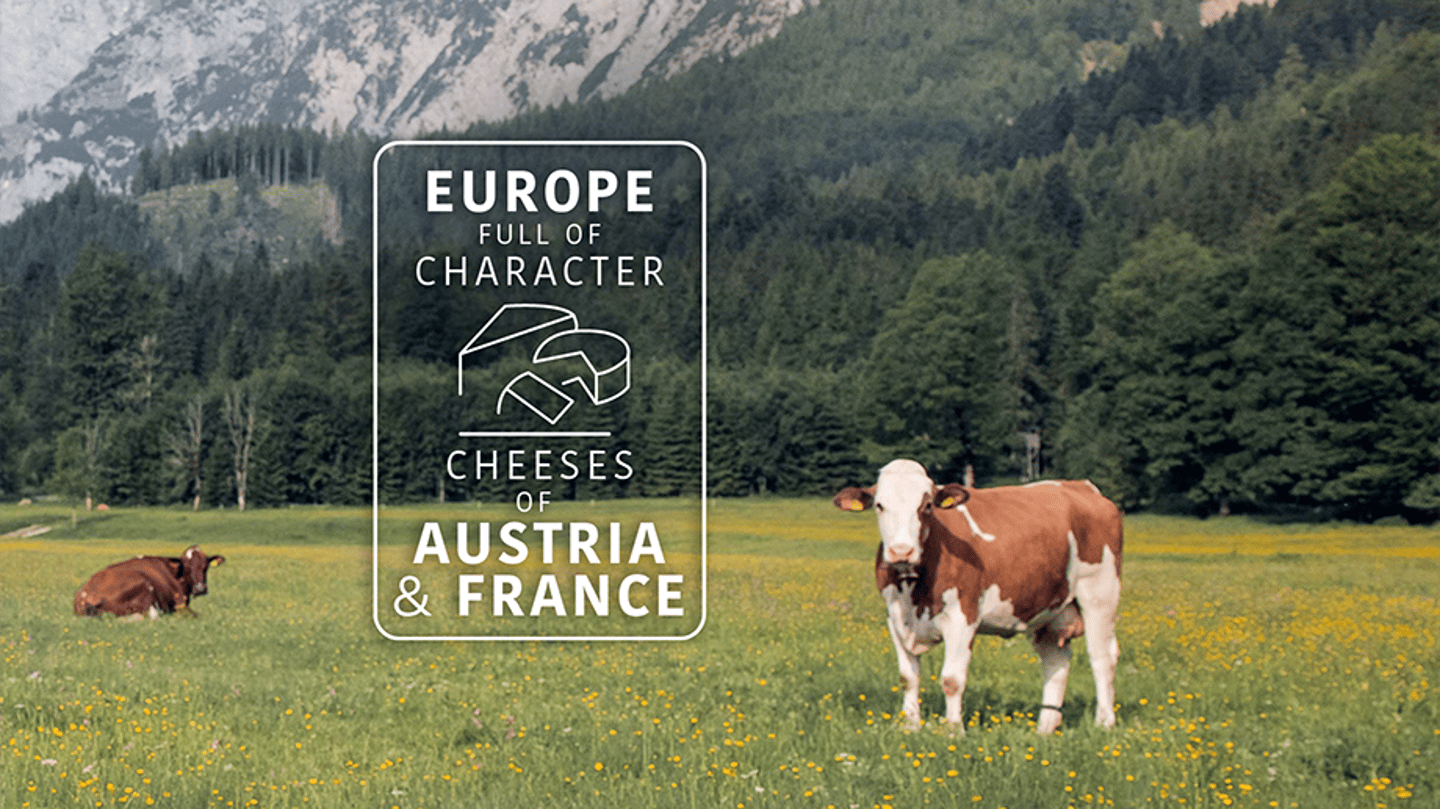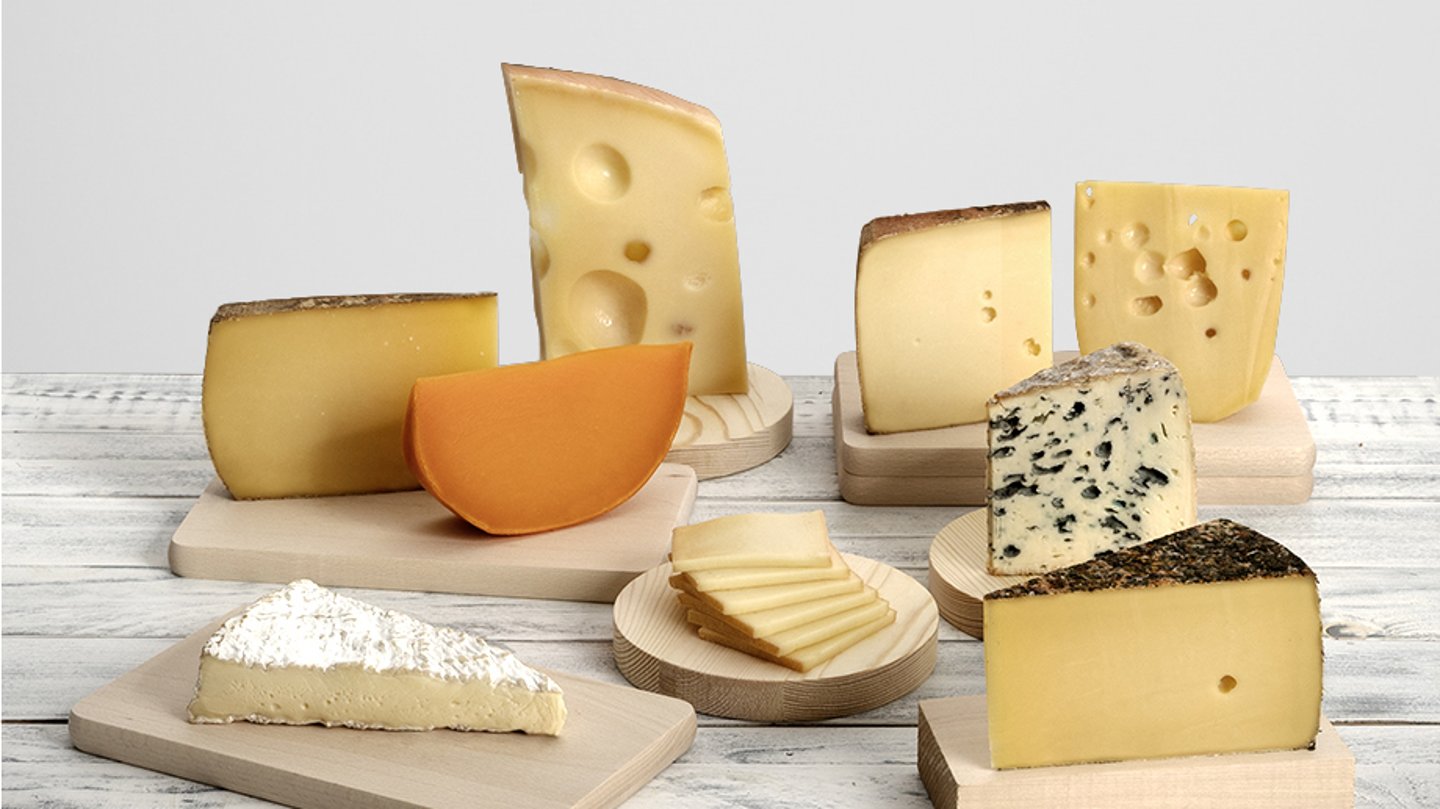Europe: The home of great cheese
When it comes to exquisite, palate-pleasing cheeses accessible to retail customers, the European offering stands strong. As the cradle of fine cheesemaking, Europe is home to thousands of producers and exports the world’s most iconic cheeses across the globe.
Be it the diversity of France’s 1,200 cheese varieties, or the unique tastes of Austria’s Alpine offerings, cheese producers in Europe have been leveraging centuries of cheesemaking experience to bring today’s consumers a wide choice of superior products.
Camembert, Brie, Comté, PDO, Beaufort, PDO and Fourme d'Ambert, PDO (CNIEL is the cow's milk inter-branch organisation.) are cheese varieties known the world over, that evoke France’s rich dairy history. Every cheese reflects the natural environment where it was produced, resulting in a breadth of textures, colours, tastes and sizes. (French cheeses are available from 1.5 ounces to 150 pounds.)
In Austria, mountainous pastures create the perfect backdrop for raising cattle essential in producing the region’s hard, semi-soft and soft cheeses. These cheeses are produced primarily by small, family-owned businesses dedicated to their craft. The skills of these dairy farmers and cheesemakers, guided by the knowledge and experience passed down over generations, is what gives Austrian Alpine cheeses their unique flavour. With a wide spectrum of over 400 cheese varieties, flavours can be soft and mild, or sharp and robust.
When consuming cheeses from France and Austria, consumers can count on stringent standards in place, recognized by the European Union (EU), to guarantee authenticity of place, quality and cheesemaking techniques. The Protected Designation of Origin (PDO) label on many European cheeses signifies that the cheese is made only within a limited geographical region by skilled local producers who use specific ingredients and time-honoured traditions.
The EU’s comprehensive laws around agricultural products also contribute to making European cheeses so unique. Sustainable farming practices and strict standards for animal feed and farm and dairy hygiene mean quality is never compromised. Many dairy animals in the EU graze almost solely on grass, which results in higher Omega-3 fatty acids in their milk and subsequently the delicious cheese produced from it.
“These cheeses, which are protected by PDO standards, preserve the traditional know-how and cultural heritage of rural areas, while also providing a source of income and employment for their inhabitants,” says Charles Duque, Managing Director of CNIEL | The French Dairy Board, Americas.
For European cheeses, aging is optimal
European cheeses are perfectly ready to eat because they are ripened to optimal maturity. Ripening isn’t just about aging either. As European cheesemakers over the centuries have discovered, cheese needs to be aged in the right conditions using best practices—exposure to mold, controlled temperatures and proper humidity—to ensure that the cheese’s unique characteristics and flavour profiles can prevail.
With European cheeses, aging adds great value too. In fact, many places in Europe have been converted into ripening cellars producing some of the most valued cheeses in the world. Fort des Rousses in France’s Jura region is one example where thousands of Comté, PDO cheese are aged every year. Austria’s Vorarlberg Mountain Cheese, PDO is known for its fine tangy taste developed over a ripening period of at least six months, and aged cheeses such as Mimolette are low in lactose so they are compatible for people with digestive disorders.
Bringing great taste to Canadians
Canadians love their cheese with an average yearly consumption of 13 kg of cheese per person. As the market for natural cheeses grows, more and more Canadians are discovering the versality of European cheeses, be it for entertaining or for comforting family dinners at home. Millennials in particular are looking for more global food experiences and are willing to pay a premium for sustainable, quality products. Cooking at home more often has increased the demand for comfort and pleasure foods that European cheeses can provide.
With their diversity of flavours and textures, European cheeses can provide the perfect complement to a meal or the starring role on a charcuterie board. They also make ideal pairings in sweet and savoury dishes. Available in many convenient sizes, European cheeses are great for snacking on the go too.
“According to industry insiders, the demand for these exquisite cheeses is on the rise, driven by the expanding selection available to Canadian consumers. This includes an influx of delectable cheese imports from the European Union, enriching the Canadian culinary scene with more delectable options for cooking and crafting delicious recipes.” Duque says.
While specialty shops offering premium cheeses are popping up across Canada, grocers are also responding to the growing demand for, and subsequent import of, European cheeses to differentiate themselves from competitors and offer their customers more options. In expanding their cheese shelves with competitively priced, quality products, they’re enticing grocery shoppers to expand their palates too.
Be sure to add European Cheeses to your in-store offering!
For more information, please contact:
- Charles DUQUE, Managing Director, Americas, CNIEL | The French Dairy Board, C: +1 646 645 0220, [email protected]
- Julia Goeschelbauer, Head of Export Marketing, Agrarmarkt Austria Marketing GesmbH, m: +43 664 829 3147, [email protected]



